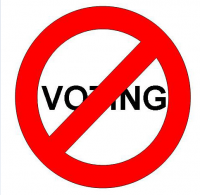News
Latest Lion Aid News
A short history of Kenya's proposals to CITES
Friday 8th March 2013
 At the ongoing CITES Conference, Kenya submitted two proposals for consideration. The first was a proposal to place a moratorium on rhino trophy hunting in South Africa – Kenya was of the opinion as echoed by very many in the world community that the “legal” exports of trophy rhino horns was a means to leak illegal horns onto the market. There was considerable evidence for this, as South Africa had long allowed “pseudo hunting” of rhinos whose horns entered commercial markets against CITES regulations. The second proposal was to place a ban on all further ivory trade initiatives from CITES member states until 2017. Kenya withdrew the rhino trophy hunting moratorium and also looked to withdraw the ivory trade proposal. History repeats itself. In 2010, Kenya proposed to have no further submissions for ivory trade for the next 20 years. Withdrawn. In 2007, Kenya proposed no trade in raw or worked ivory for 20 years. CITES instead allowed a “one off sale” of many tons of ivory to China and Japan from Namibia, South Africa, Botswana and Zimbabwe. In 2004 at CITES CoP 13, Kenya proposed uplisting African lions from Appendix II to Appendix I based on concerns about trade and the declining lion populations. Kenya backed down, accepting conferences among the lion range states to determine population numbers and national conservation action measures. Nine years on, no substantive progress has been made. Indeed, Kenya and Namibia were charged by CITES in July 2011 to produce a Periodic Review of lion populations. All reporting dates have been missed. Kenya is seen by many as a conservation-minded African nation. Indeed, many western Governments and many NGOs put their faith in Kenya with programmes and dollars. Whenever Kenya announces their conservation stand to upcoming CITES conferences, many come knocking on the door of the Kenya Wildlife Service to express solidarity, support, and funding. Does Kenya deserve this status? CITES recently included Kenya in their Gang of Eight nations involved in and facilitating illegal ivory trafficking. CITES say trade sanctions might result. Can Kenya continue to be taken seriously? Is Kenya really a nation that we can look to for progressive wildlife conservation formulas? Does Kenya really have the backbone to push through proposals at CITES or, as evident once again at CoP 16, does Kenya always fall at the last hurdle? Ever since 2004 Kenya has significantly failed to progress on any of her very good agendas. That is to be regretted, decried and perhaps carefully assessed as to the reason for constant failures. CITES does unfortunately not consider much science, but they do respond to effective lobbying. Shouldn't Kenya learn to play the game better and meanwhile cease to submit half-hearted proposals? Picture credit: www.liberadio.com Please support us if you can to conserve the remaining fragile lion populations. Thank you Tags: Botswana, CITES, Namibia, Kenya, South Africa, Zimbabwe, China, ivory, Japan, rhino trophy hunting, Categories: Illegal Wildlife Trade |
Posted by Pieter Kat at 13:28
No comments have been posted yet.
Add a new comment
Existing user
New user sign up



